Introduction: Thin Hair, Bold Choices
For every woman who has stood in front of the mirror and sighed at the way her hair lies flat against her scalp, or stared longingly at Pinterest boards filled with thick waves and voluminous bobs, this one’s for you. Thin hair has its own rules. It whispers where other textures shout. It doesn’t always do what beauty ads promise, and most of the time, it feels like your options are limited.
But here’s the truth that’s rarely said out loud: thin hair is incredibly powerful when cut short.
It moves differently. It frames the face in uniquely elegant ways. It allows you to go lighter, bolder, and braver. And most importantly, it lets your personality shine without being weighed down—literally or figuratively.
This is not another post about hiding your thin hair. It’s about celebrating what you do have, and styling it in a way that makes you feel beautiful, confident, and effortlessly pulled together. Short hairstyles don’t fix thin hair. They free it—and you along with it.
Rewriting the Narrative: From Disappointment to Design
If you’ve ever been told to try volumizing sprays or endless teasing to make your hair look “full,” you know how exhausting and performative it can be. The pressure to make your hair look like something it isn’t—dense, bouncy, dramatic—can leave you feeling like you’re not enough. Especially in a world that celebrates big blowouts and lush curls.
But here’s where short haircuts become a quiet revolution.
They don’t pretend. They don’t chase volume that doesn’t come naturally. They don’t fight your hair’s texture. Instead, they work with it. And once you stop comparing your hair to thicker strands and start styling it on its own terms, something magical happens. Your entire relationship with your hair shifts.
It’s no longer about covering up. It’s about carving out. Defining shape. Creating elegance. Showing off your eyes, your cheekbones, your jawline. Short hair makes thin hair look deliberate. Sculpted. Chic. It transforms fragility into finesse.
And it starts with the right mindset, not just the right scissors.
The Power of Less: Why Short Hair Wins for Thin Strands
Let’s be honest—long hair can be a drag. Especially when it’s thin. It weighs itself down, often looks stringy at the ends, and requires far more effort to style. By contrast, short hair gives you freedom. It lifts. It shapes. It opens the face. It creates the illusion of volume where none exists, simply through the art of proportion.
Cutting your hair short isn’t about giving up on femininity or complexity. It’s about getting smarter. Instead of chasing fullness, you’re choosing form. Instead of layering on products, you’re simplifying. You’re using your natural assets—your hair’s fine texture, its quick drying time, its natural lightness—to your advantage.
Short hair is not a compromise. It’s a declaration.
Confidence in Structure: What Short Hair Does for Your Face
When your hair is thin, your haircut has to carry more responsibility. It has to create volume, define shape, and draw attention upward. The beauty of short hair is that it forces focus—on your eyes, your smile, your face.
The structure of short hairstyles—whether it’s a textured pixie, a jaw-length bob, or a shaggy cut—adds architecture. It builds a silhouette where your strands may fall short. Sharp lines, subtle layers, and movement become tools of empowerment.
You don’t need a lot of hair to make a big statement. You just need a thoughtful cut. One that plays with proportion, leverages asymmetry, and allows your hair to lift rather than lie.
With short hair, your style isn’t an afterthought. It’s intentional art.
Styling From the Root: Tricks Without Tricks
So, how do you actually style short, thin hair without turning to heavy products or exhausting routines?
The secret lies in root intention. Everything starts there—because that’s where volume is born. But volume doesn’t always mean mousse and heat. Sometimes, it means a good root spray and a five-second finger fluff. Sometimes, it’s a zigzag part. Other times, it’s flipping your hair to the opposite side for instant lift.
And yes, the tools help—but only when used wisely.
A small round brush creates movement. A flat iron adds tiny bends that mimic fullness. Dry shampoo adds grip to otherwise slippery strands. A light texturizing paste gives shape without weighing down. But even without these, your haircut should do most of the heavy lifting.
Great short hair isn’t high maintenance. It’s high strategy.
The Role of Movement in Short Hair Magic
Movement is everything in short hairstyles for thin hair. And we don’t mean bouncy curls or Hollywood waves. We mean shape that shifts—hair that moves naturally, catches the breeze, and gives life to your profile.
Thin hair naturally resists stiffness. So instead of trying to fight its flexibility, short styles embrace it. That subtle curve of hair tucked behind the ear. The way your bangs fall differently each day. The loose pieces that slip out of your ponytail and add softness.
Movement makes short hair feel alive. It reminds people that your hair has its own rhythm, its own softness, its own story.
When your haircut allows your hair to breathe and bend, it doesn’t just look good—it feels real.
Texture as Illusion: Your Hair’s Secret Weapon
If you’ve ever been envious of thick, textured styles, consider this: texture can be created. Especially in short hair, where just a few waves or piece-y ends can change the whole vibe.
Even the illusion of texture—through cutting techniques or minimal product—makes thin hair appear fuller. Layers can be razor-cut to create airy volume. Ends can be feathered for softness. Bangs can be swept to one side for natural lift.
And when you’re not styling, your hair still holds shape. That’s the beauty of working with its natural density—not against it.
With the right texture, your hair doesn’t just look thicker. It looks intentional. Like it’s supposed to be this way. And it is.
Color, Shine, and Light Play: Enhancing What You Have
Sometimes, what makes short thin hair pop isn’t the cut or the texture—it’s the light.
Color plays a major role in creating visual volume. Highlights can add dimension. Glosses can boost shine. Root shadows create depth, making hair look like it has more lift at the crown.
Even subtle tonal shifts—like going a shade warmer or cooler—can give the illusion of fuller strands. A good stylist knows how to use color to compensate for lack of density.
Add in shine-enhancing products or reflective finishes, and your hair begins to glow—literally. It catches light, frames your face, and moves like silk.
Thin hair doesn’t need to be bold to be beautiful. It just needs to be seen in the right light.
When Short Hair Feels Like Liberation
Many women say cutting their hair short was the most freeing decision they’ve made. Especially if they’ve spent years chasing fullness, trying to blend in, or styling their hair based on expectation rather than reality.
With short thin hair, you let go of the burden of pretending. You stop chasing styles that don’t hold. You stop hiding your scalp, your length, or your texture.
Instead, you embrace what’s real. And realness is radiant.
You may find yourself wearing bigger earrings. Leaning into bolder makeup. Choosing simpler wardrobes because your haircut is the star. Or maybe you’ll just feel lighter—not just in weight, but in spirit.
That’s what a good short hairstyle does. It lifts more than just your hair. It lifts you.
Maintenance as Self-Respect, Not Obligation
Short thin hair might seem easier to manage—and it is, in many ways. But maintenance still matters. Not as a chore, but as a ritual of respect.
Trimming your ends regularly keeps your cut clean. Washing every 2–3 days prevents buildup that can weigh down your style. Lightweight serums or leave-ins help maintain moisture without adding grease.
This isn’t about perfection. It’s about presence. Showing up for yourself in the mirror. Giving your hair what it needs, not because it’s flawed—but because it’s worthy.
And when styling feels like a gift instead of a burden, your whole routine becomes more joyful. You start to look forward to the fluff, the spritz, the final touch.
You realize that maintenance isn’t effort—it’s empowerment.
Check out this ideas and SAVE your favorite
1. The Blunt Bob
A blunt bob is a go-to for thin hair because it creates the illusion of fullness by keeping the ends thick and even. Cut just above the shoulders or at the chin, this style offers structure without layering, helping hair look denser.
Why it works: The sharp, straight line prevents thin ends and adds a polished silhouette.
Styling Tips:
- Blow-dry with a round brush for bounce at the roots.
- Use a volumizing mousse or root lift spray.
- Add a shine serum to keep it sleek and healthy-looking.
1

2

3

4
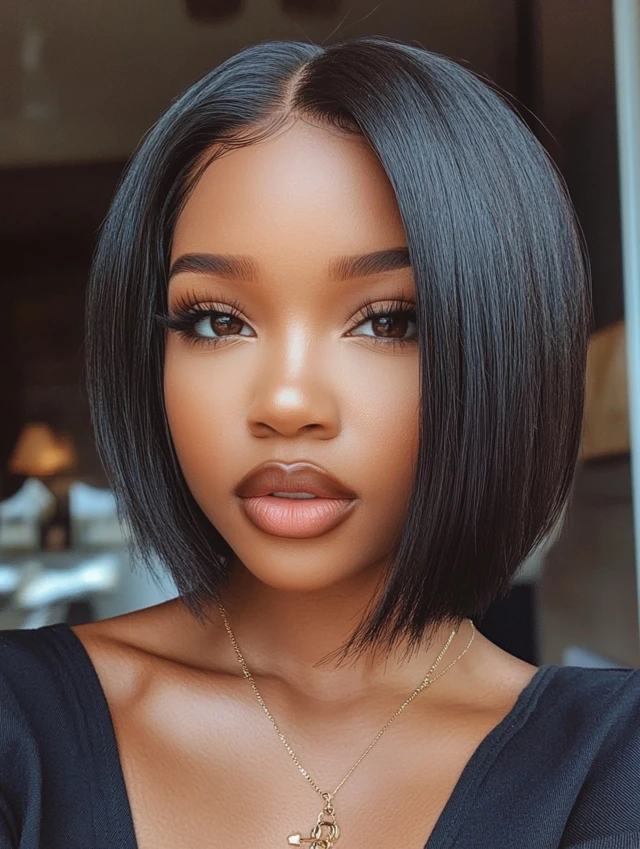
Best For: Oval, round, or heart-shaped faces.
2. The Textured Pixie Cut
Pixie cuts are ideal for fine strands because they keep everything lightweight while adding choppy, textured layers that build volume where you need it.
Why it works: Short layers can make hair appear thicker and fuller, especially on top.
Styling Tips:
- Use a lightweight texturizing paste or clay to define layers.
- Tousle with your fingers for that effortless “messy pixie” look.
- Keep the sides shorter to draw attention upward.
1

2
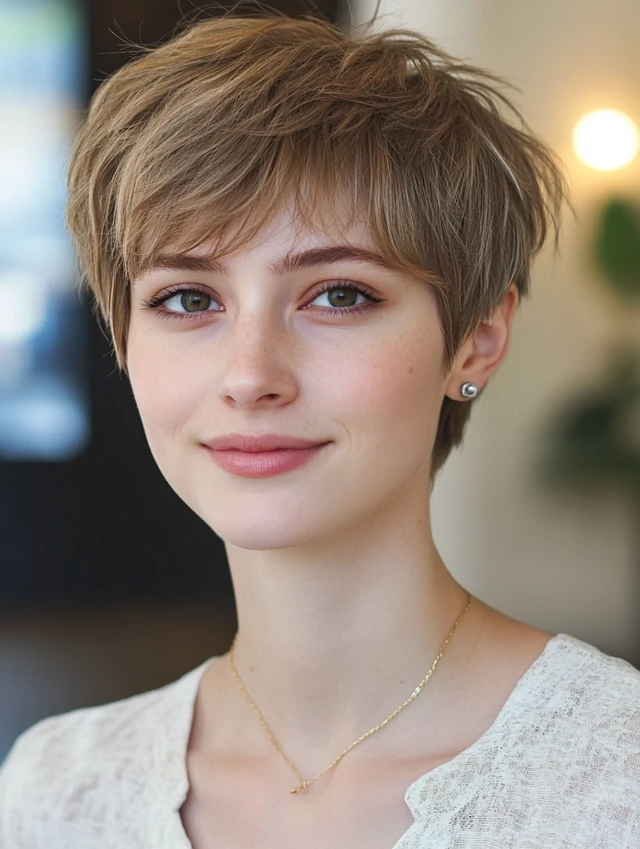
3
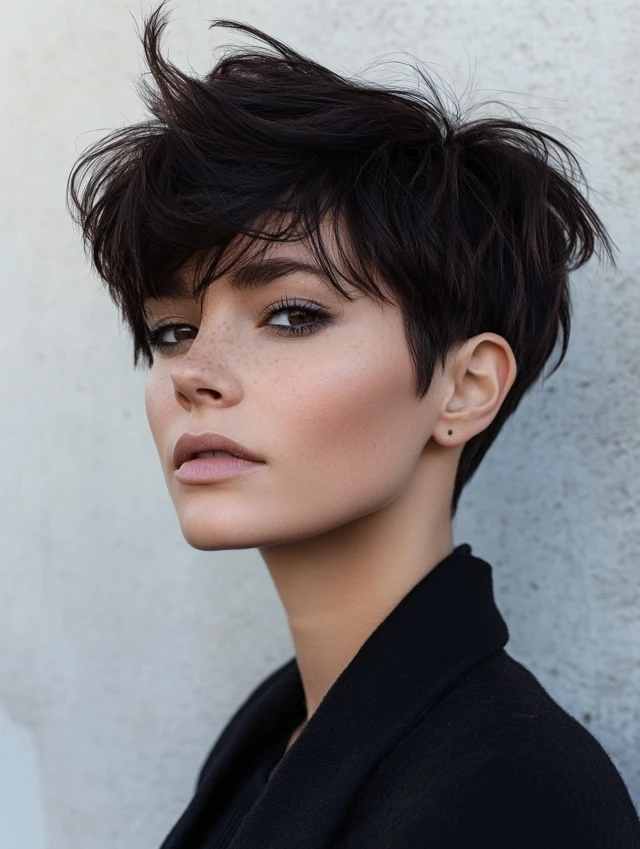
4
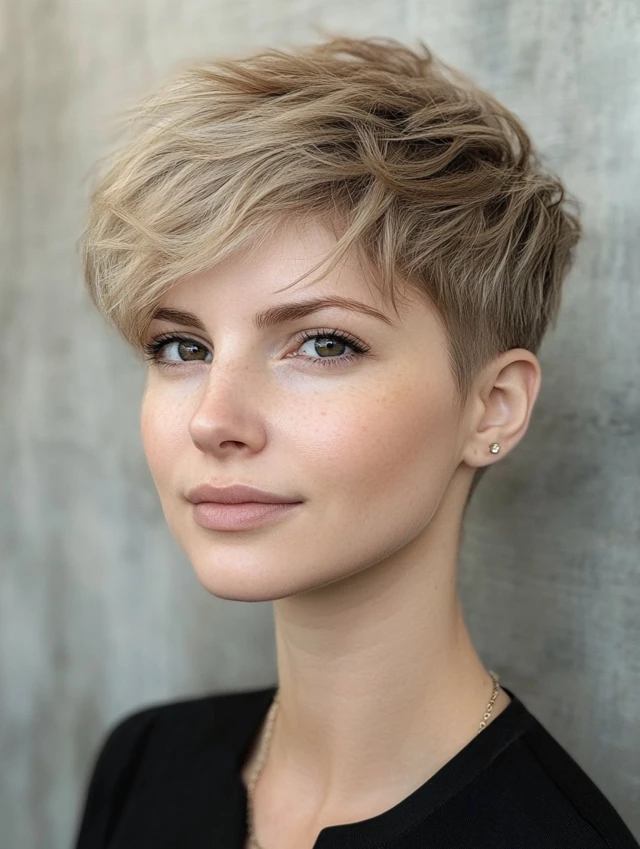
Best For: Oval and heart-shaped faces; works well for straight or wavy hair.
3. The Layered Bob
Adding soft layers to a bob creates movement and gives the illusion of more body. The key is to keep layers subtle—too much can make thin hair look sparse.
Why it works: Layers add dimension and prevent hair from lying flat.
Styling Tips:
- Use a root volumizer and blow-dry upside down for added lift.
- Finish with dry shampoo or a matte spray for grit.
- Avoid heavy conditioners near the roots.
1
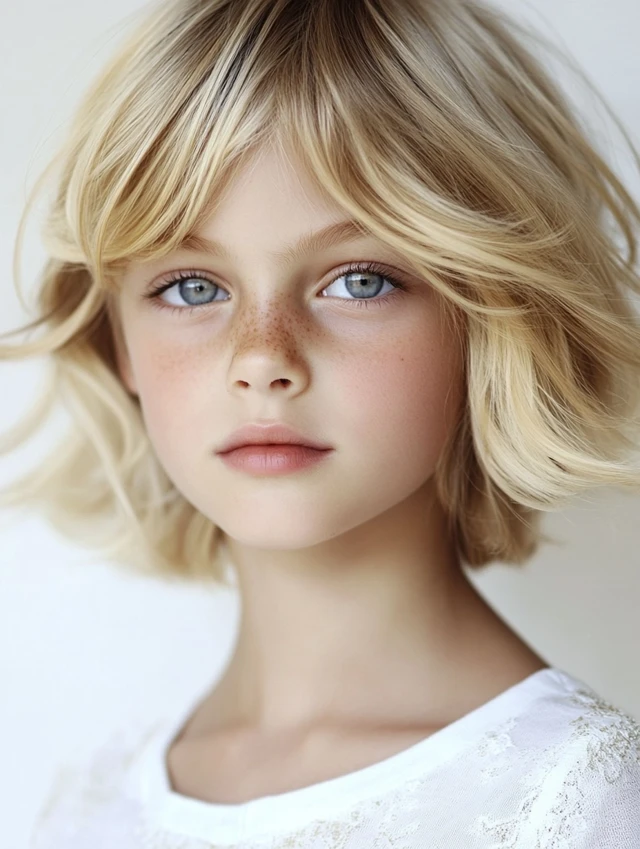
2
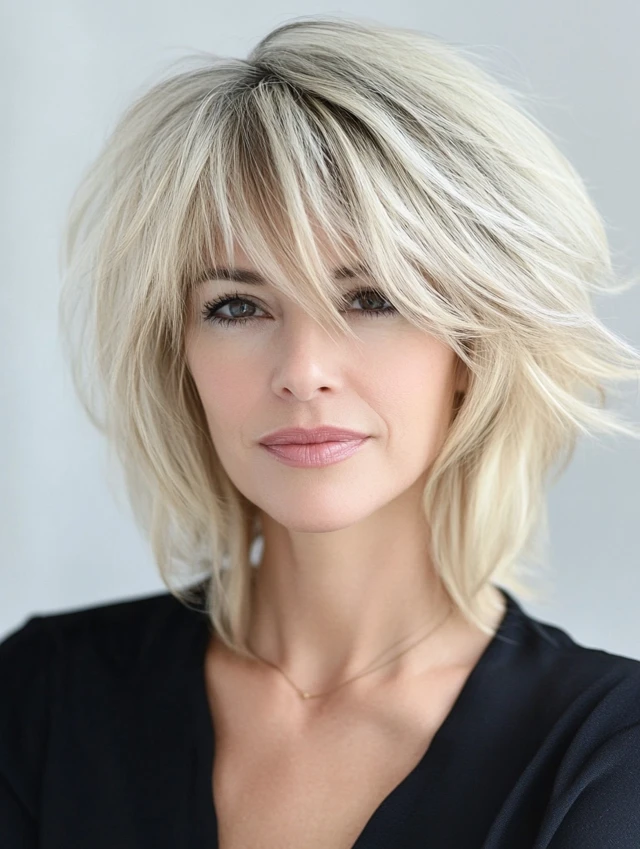
3
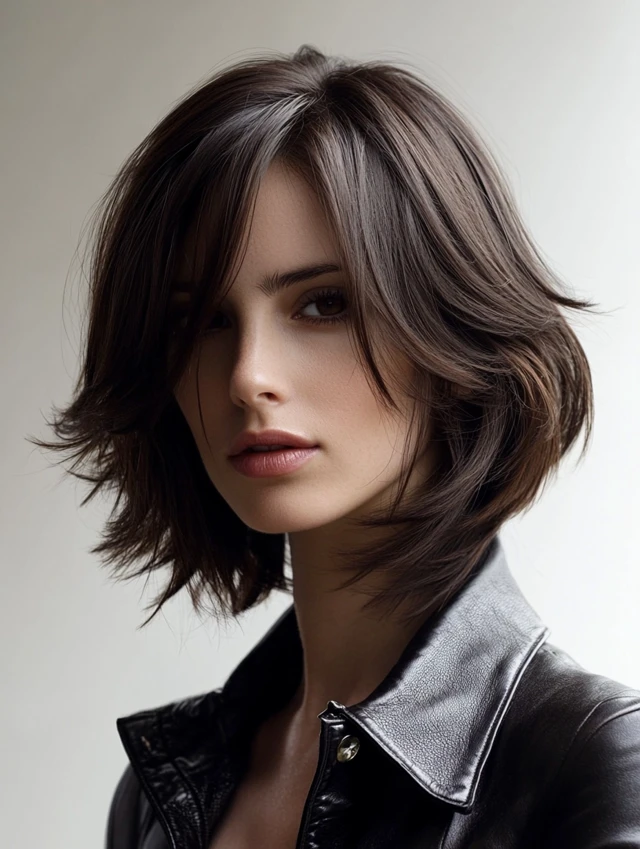
4
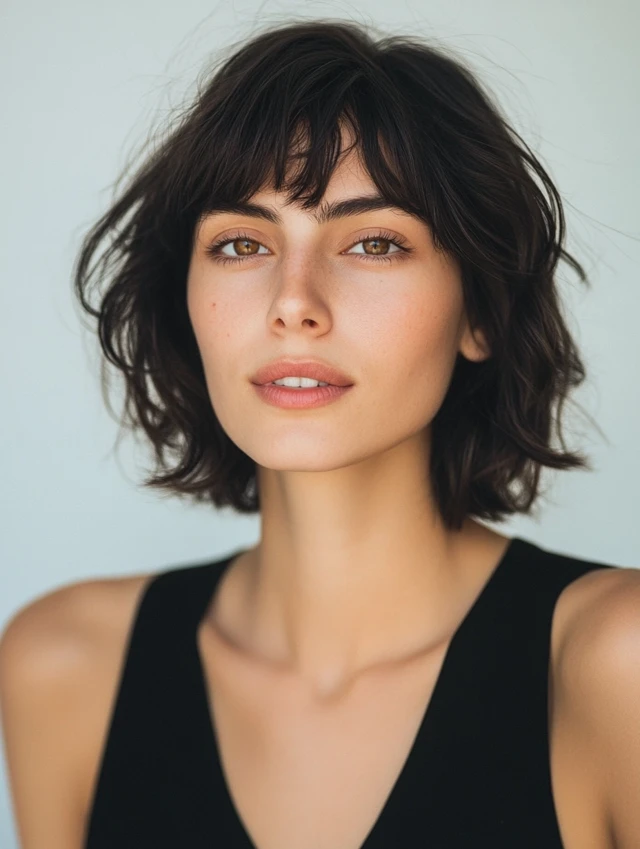
Best For: Thin, straight, or slightly wavy hair; round or square face shapes.
4. The Asymmetrical Cut
This edgy cut has one side longer than the other, adding visual interest and structure to your hairstyle. It’s bold, flattering, and makes hair appear thicker.
Why it works: The imbalance tricks the eye into seeing more volume and shape.
Styling Tips:
- Flat iron the longer side for sleekness and tuck the shorter behind the ear.
- Add a bold ear cuff or statement earrings.
- Use smoothing cream to maintain shine and shape.
1
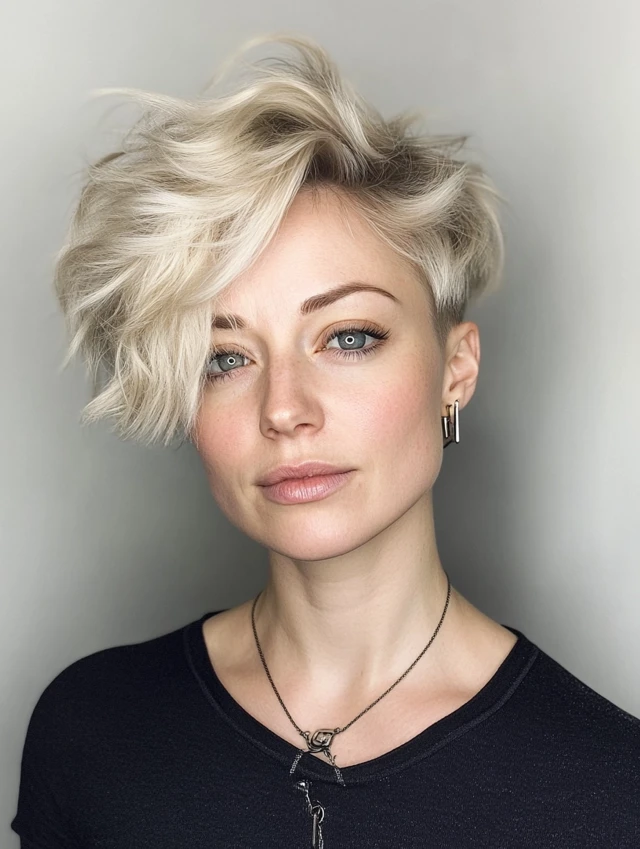
2
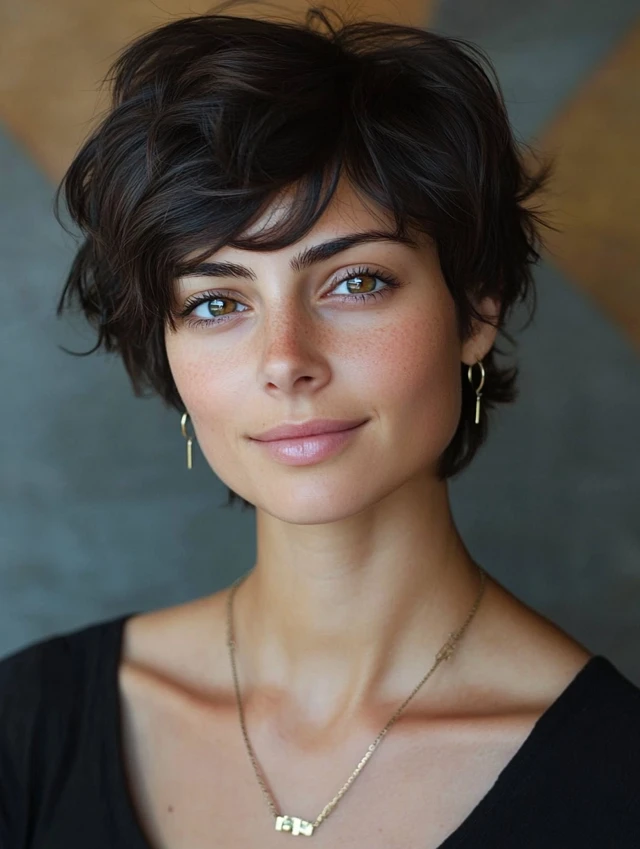
3
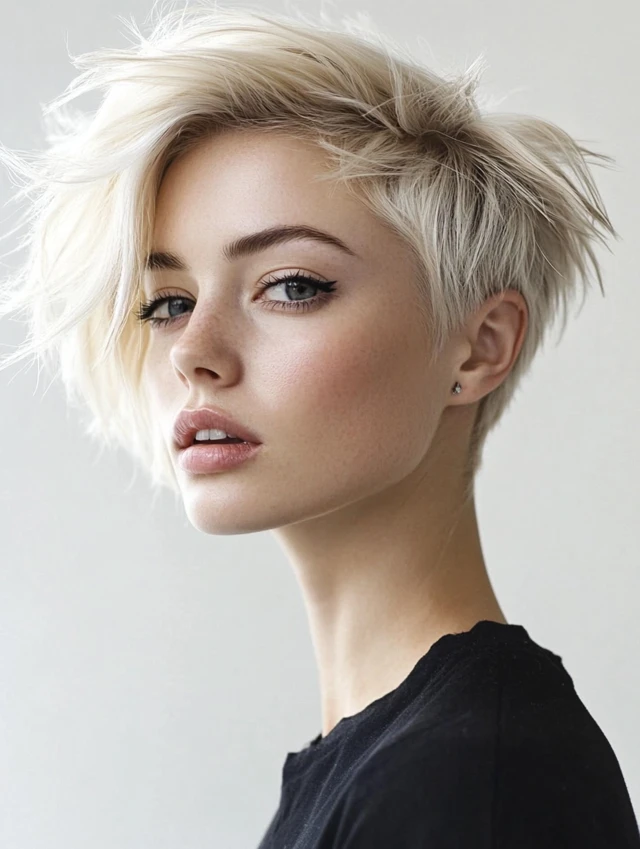
4
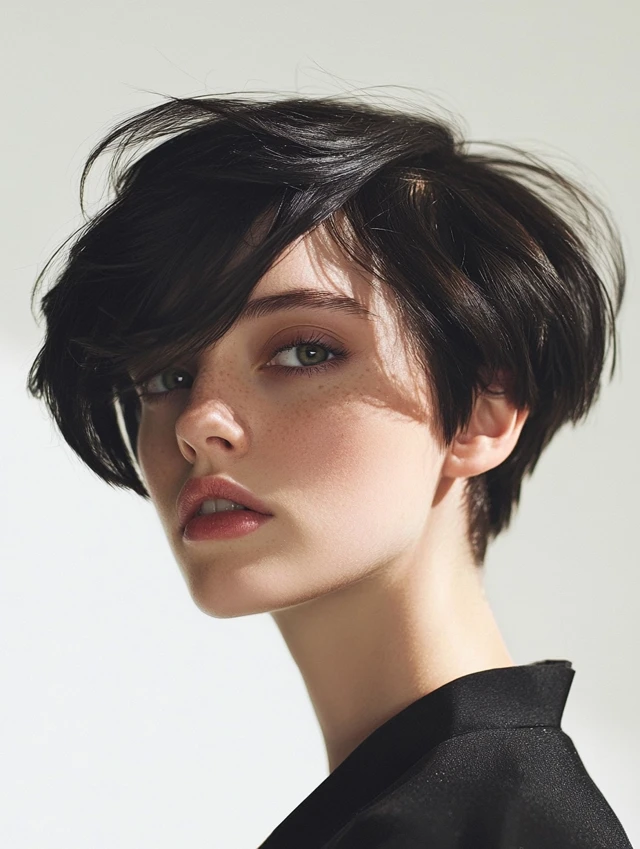
5

Best For: Square and oval faces; best on straight or lightly wavy hair.
5. The Curly Crop
If you have natural curls or waves, a short crop that enhances texture can be the perfect solution for thin hair. Layers should be tailored to avoid weight on top.
Why it works: Curls create natural volume, especially when shaped close to the head.
Styling Tips:
- Use curl cream and a diffuser to define curls.
- Dry upside down for root lift.
- Separate curls with your fingers once dry to avoid frizz.
1
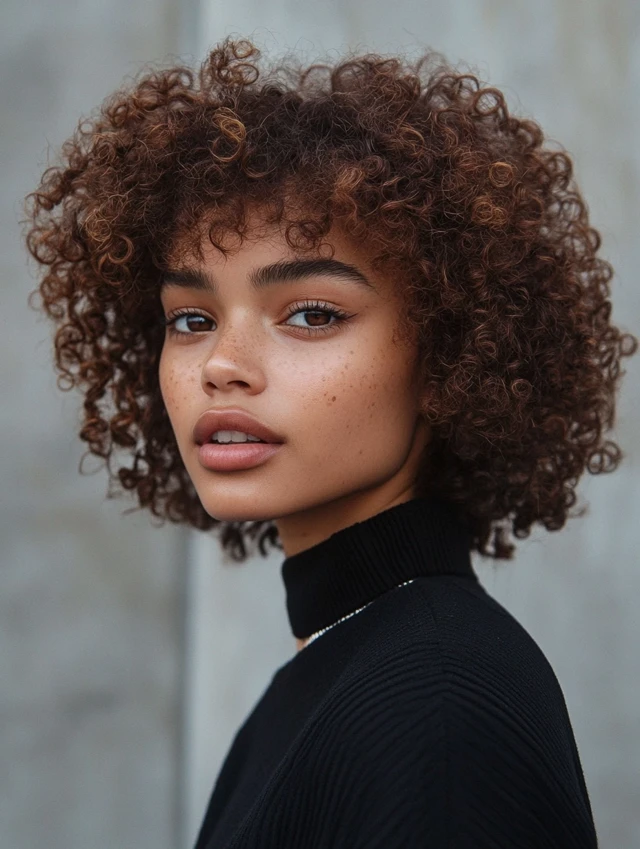
2
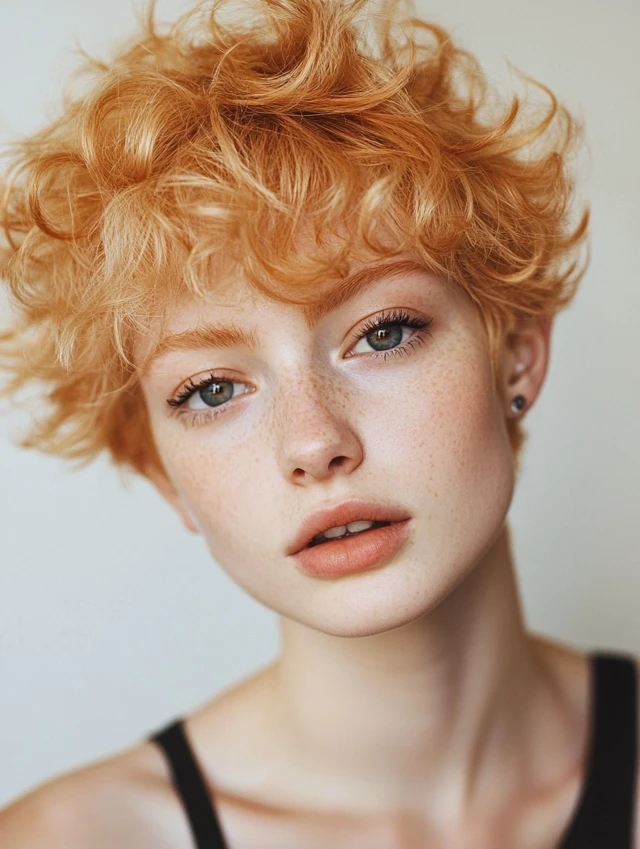
3
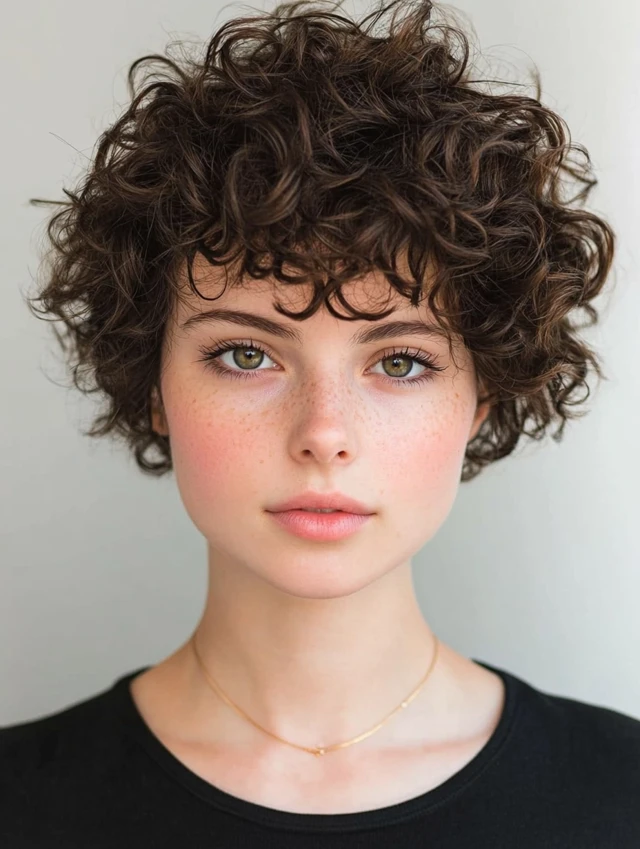
4

Best For: Round or long faces; naturally curly or wavy textures.
6. The Short Shag
The modern shag is full of short, feathery layers that give body and movement to thin hair. The built-in texture adds grit and volume effortlessly.
Why it works: The tousled finish makes hair look intentionally full and voluminous.
Styling Tips:
- Scrunch with a sea salt spray or texture foam.
- Let it air-dry or use a diffuser for more lift.
- Optional curtain bangs add softness to the frame.
1
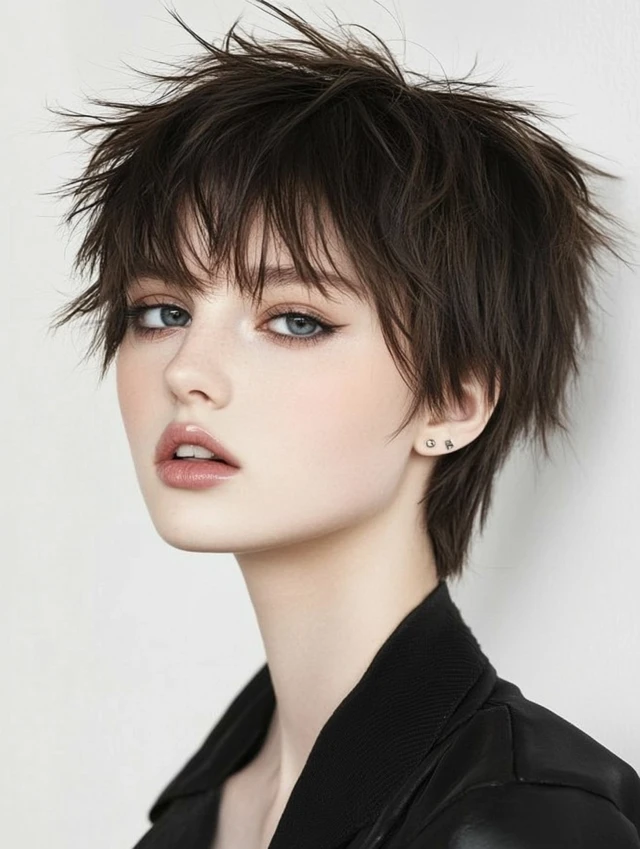
2
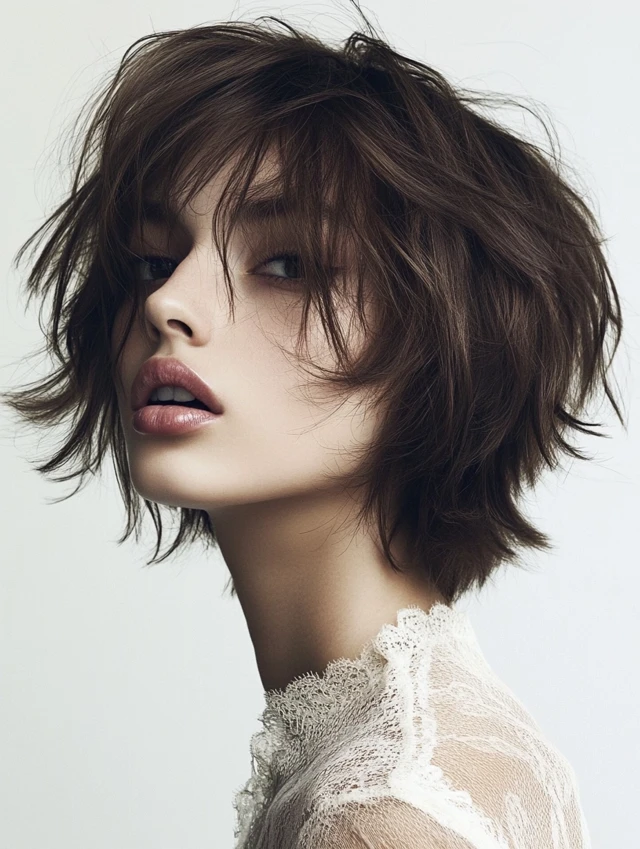
3

Best For: Oval and heart-shaped faces; thin hair that’s naturally wavy or straight.
7. The French Bob
The chin-length French bob is stylish, artsy, and flattering for thin hair. Often paired with soft fringe or curtain bangs, it brings a timeless Parisian charm.
Why it works: It’s short enough to avoid limpness, yet long enough to frame the face gracefully.
Styling Tips:
- Slightly curl the ends inward with a flat iron for a vintage flair.
- Use a volumizing mousse to avoid flatness.
- Keep the fringe light and wispy to complement your features.
1

2
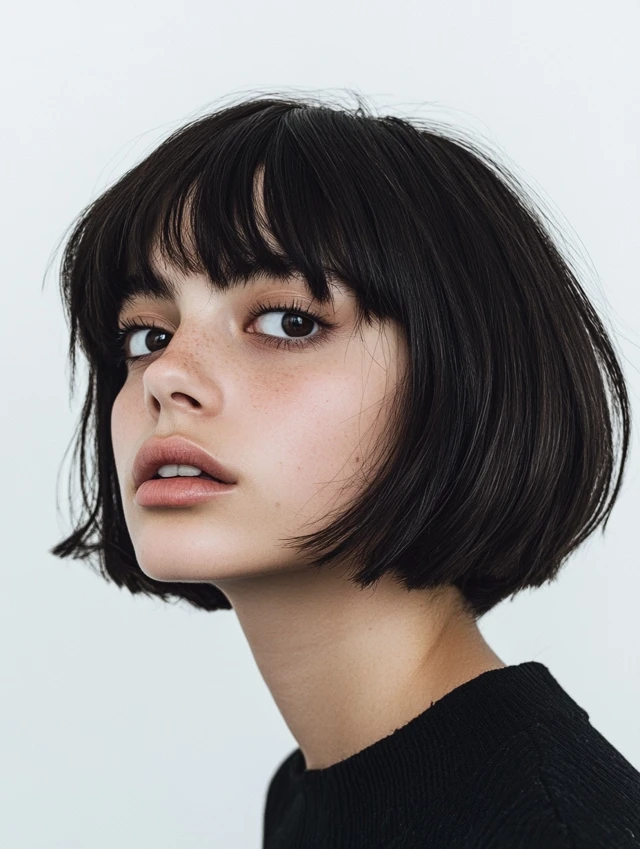
3

4

Best For: Oval, heart, or square faces; straight or slightly wavy hair.
8. The Cropped Bowl Cut
This isn’t your old-school bowl cut—modern versions are refined with layers and asymmetry. It’s bold, clean, and surprisingly volumizing on fine hair.
Why it works: The dense top and tapered sides create contrast and height.
Styling Tips:
- Keep the crown heavy and the perimeter neat.
- Use mousse to lift roots and finger-style into place.
- Add bold brows or makeup for a balanced look.
1
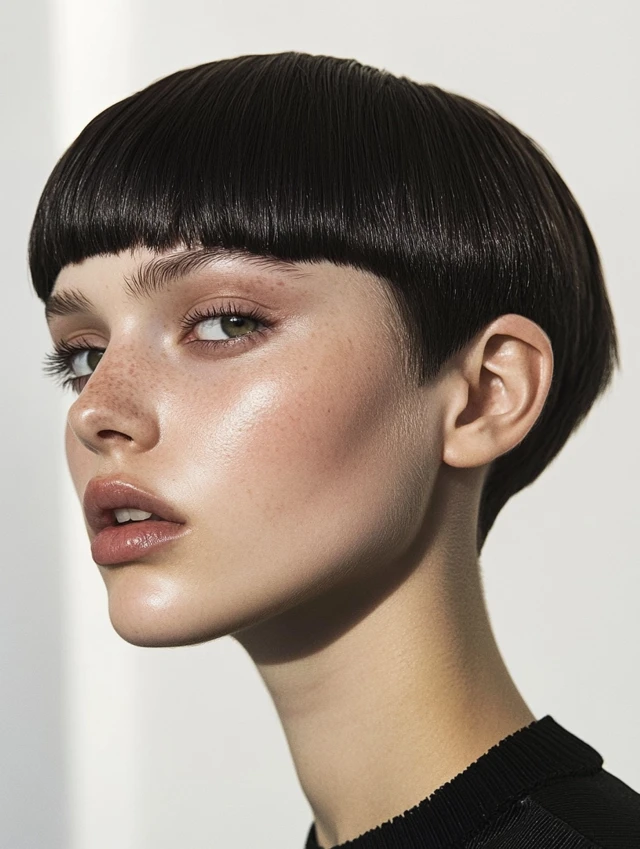
2
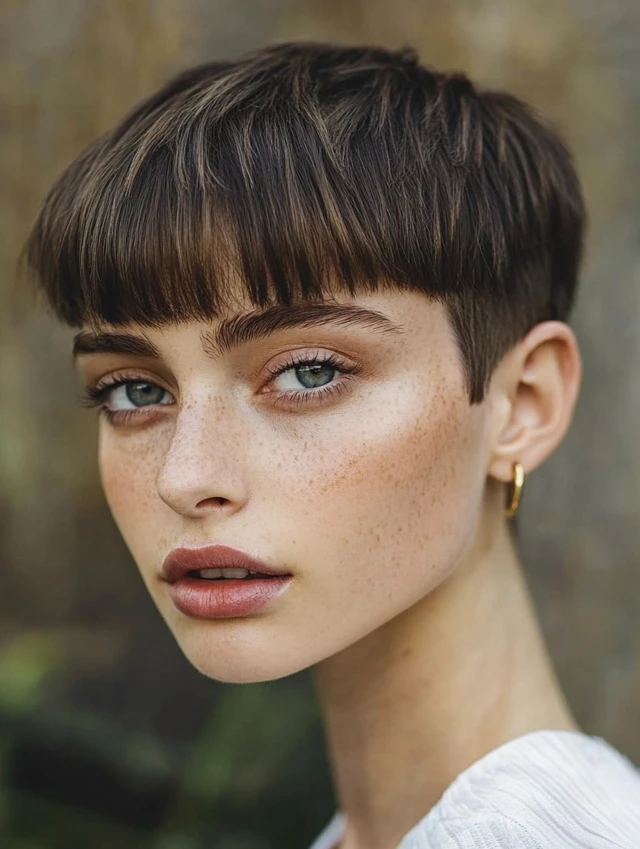
3
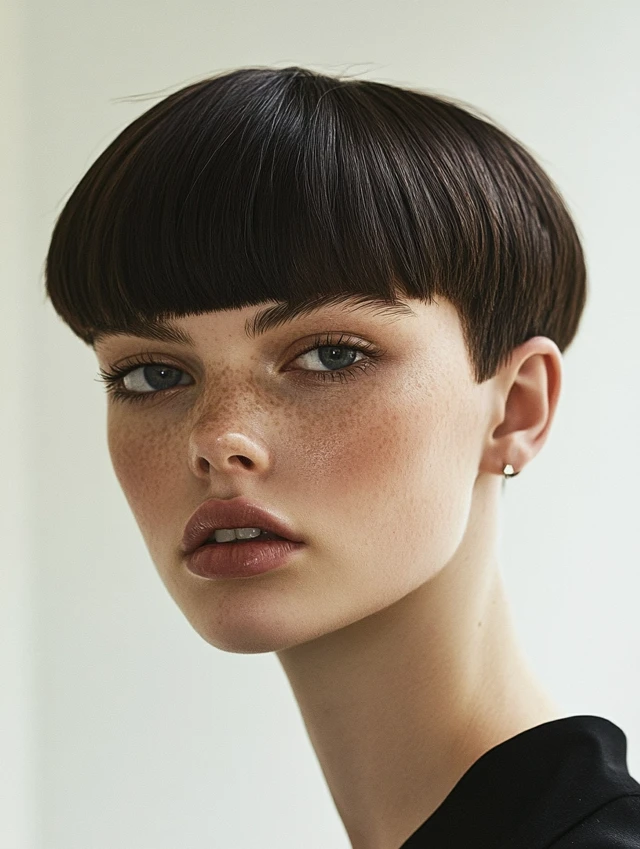
4

Best For: High cheekbones, oval or round faces; ideal for straight hair.
9. The Side-Swept Bob
A deep side part and angled bob work wonders to fake fullness. By sweeping the hair over to one side, you instantly create body and dimension.
Why it works: The asymmetry adds drama and gives the appearance of more volume on top.
Styling Tips:
- Blow-dry with a side part using a round brush.
- Apply root lift powder on the thicker side.
- Pin one side behind your ear with a stylish clip.
1
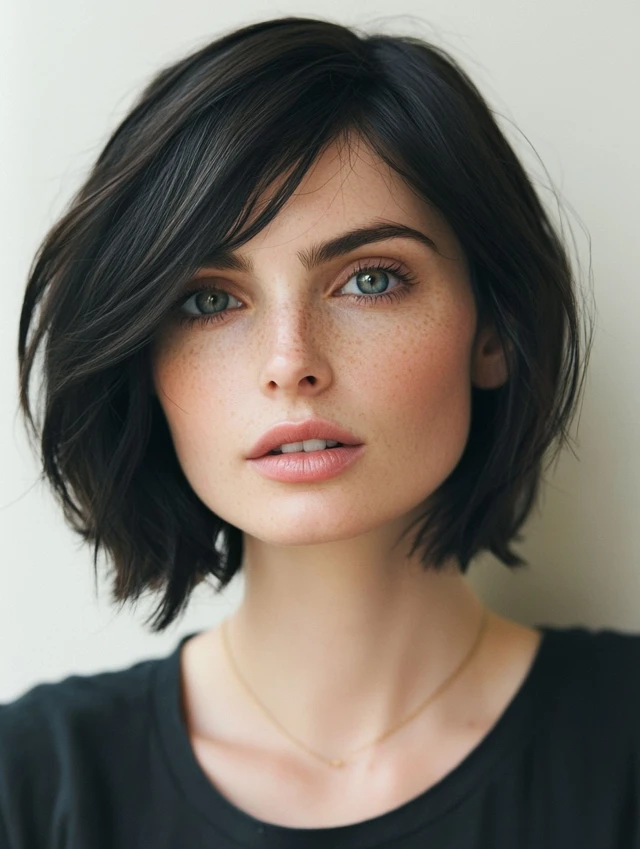
2
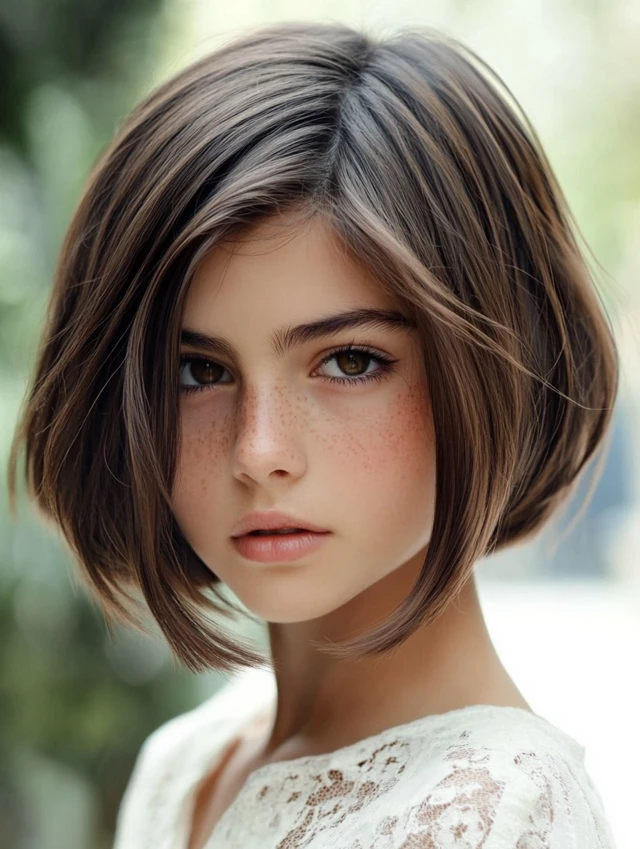
3
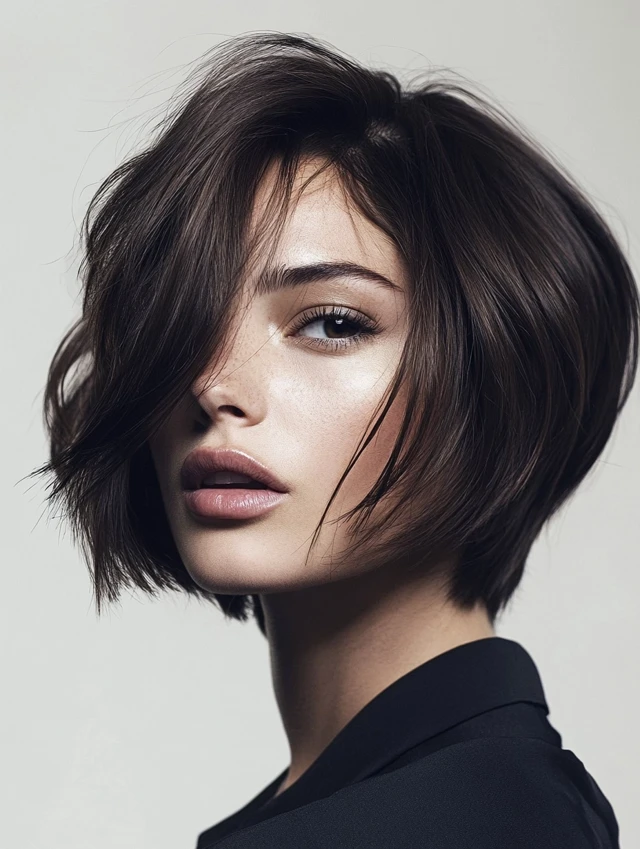
4

Best For: Oval or heart faces; great for fine, straight textures.
10. The Short Undercut
For bold personalities, a short undercut with longer hair on top can offer a striking contrast and remove bulk while letting the top layers shine.
Why it works: Removing lower bulk lets the top appear fuller by comparison.
Styling Tips:
- Use wax or pomade to style the top into spikes or waves.
- Fade the sides for a clean, modern finish.
- Color or highlights can enhance definition.
1

2

3
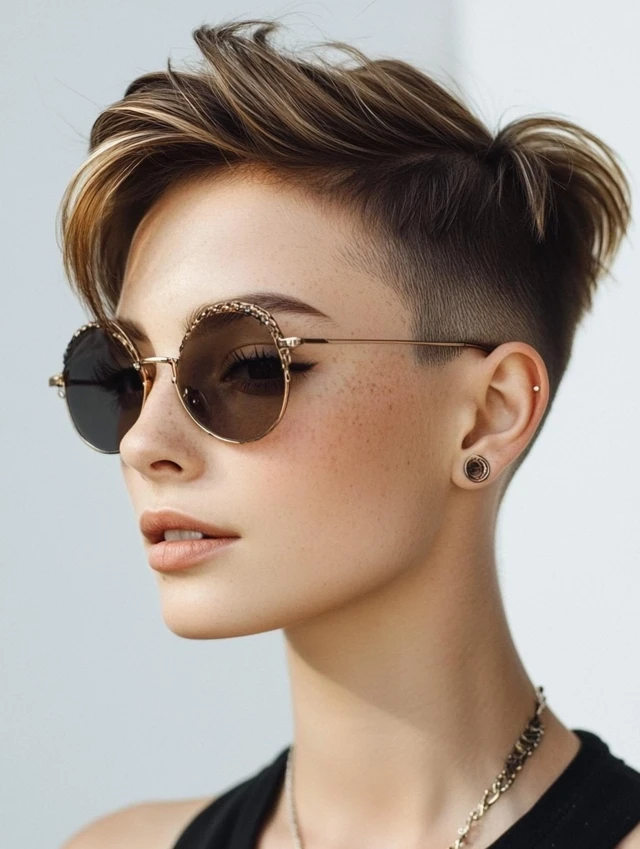
4

Best For: Edgy looks; oval or long faces; straight or wavy thin hair.
No Comparison Needed: Beauty on Your Own Terms
It’s tempting to measure your hair against the thick waves in ads or the heavy buns you scroll past online. But the real shift comes when you stop asking, “How can I make my hair look like that?” and start asking, “What looks best on me?”
Because your short, thin hair doesn’t need to mimic anyone else’s. It doesn’t need to be transformed. It just needs to be understood.
And when you understand your hair—its texture, its rhythm, its strengths—you stop chasing beauty standards.
You start creating your own.
Final Thoughts: You Don’t Need More Hair. You Just Need More You.
Short hairstyles for thin hair are not about scarcity. They’re about strategy. They’re about knowing your hair well enough to style it in ways that feel real, authentic, and true to who you are.
They’re about celebrating movement, honoring softness, working with texture, and loving your reflection without filters.
You don’t need thicker hair to feel beautiful. You just need the right haircut, the right mindset, and the freedom to define beauty for yourself.
So trim it. Texturize it. Style it once and let it live. Your short hair isn’t a limitation.
It’s your liberation.